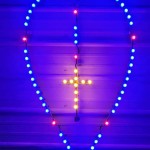How to Effectively Seal Painted Outdoor Furniture for Long-Lasting Beauty
Adding a fresh coat of paint can revitalize your outdoor furniture, enhancing its appearance and extending its lifespan. However, leaving the painted surface unprotected can diminish its vibrancy and shorten its durability. Sealing painted outdoor furniture is a crucial step that ensures it can withstand weathering, UV exposure, and other outdoor elements. In this article, we'll delve into the essentials of sealing painted outdoor furniture, guiding you through the process to achieve optimal results.
Choosing the Right Sealant
The key to effectively sealing painted outdoor furniture lies in choosing the right sealant. Not all sealants are created equal, and selecting one that is specifically designed for outdoor use is paramount. Look for sealants that offer water repellency, UV protection, and resistance to fading and abrasion. Consider the type of paint used on your furniture, as some sealants are formulated to work better with specific paints. A polyurethane-based sealant is commonly recommended for painted outdoor furniture, providing excellent durability and protection.
Surface Preparation
Prior to applying the sealant, it's essential to properly prepare the painted surface. Ensure the furniture is clean and free of dirt, dust, or any other contaminants. If the furniture has been previously sealed, thoroughly remove the old sealant using a sealant remover or stripper. Sanding the surface lightly with fine-grit sandpaper can create a better surface for sealant adhesion. After sanding, wipe the furniture with a clean, damp cloth to remove any dust.
Application Technique
When applying the sealant, follow the manufacturer's instructions carefully. Use a clean brush or roller to apply an even coat of sealant over the painted surface. Allow the first coat to dry completely before applying a second coat for optimal protection. Depending on the type of sealant and the condition of the furniture, additional coats may be necessary. Be sure to allow ample drying time between coats.
Finishing Touches
Once the final coat of sealant has cured, your painted outdoor furniture is now protected from the elements. To maintain its pristine condition, regular cleaning and touch-ups may be required. Clean the furniture periodically with a mild soap solution and avoid using harsh chemicals or abrasive scrubbing pads. If you notice any scratches or chips in the paint or sealant, promptly touch them up to prevent further damage and maintain the protective barrier.
Maintenance and Re-Sealing
The longevity of the sealant depends on various factors, including the quality of the sealant, the exposure to weathering, and the frequency of use. Inspect your sealed furniture regularly for signs of wear and tear, such as fading, peeling, or cracking. If necessary, re-apply a coat of sealant to restore its protective properties and maintain its beauty. Re-sealing every one to two years is generally recommended to ensure continuous protection and preserve the appearance of your painted outdoor furniture.

The Best And Worst Sealers For Painted Furniture

The Best And Worst Sealers For Painted Furniture

How To Seal Acrylic Paint On Wood Exploring Sealers

The Best Clear Coat For Painted Wood 2024 Tested Reviewed

How To Waterproof And Seal An Outdoor Table With Milkoil Miss Mustard Seed S Milk Paint

The Best And Worst Sealers For Painted Furniture

How To Seal Furniture So It S 100 Waterproof Durable Wood Sealer Lily Ardor

How To Protect Outdoor Wood Furniture Osmo

What Are The Best Topcoats Sealers For Painted Furniture In My Own Style

Indoor To Outdoor Furniture I Painted Until My Arm Fell Off Grandmas House Diy







